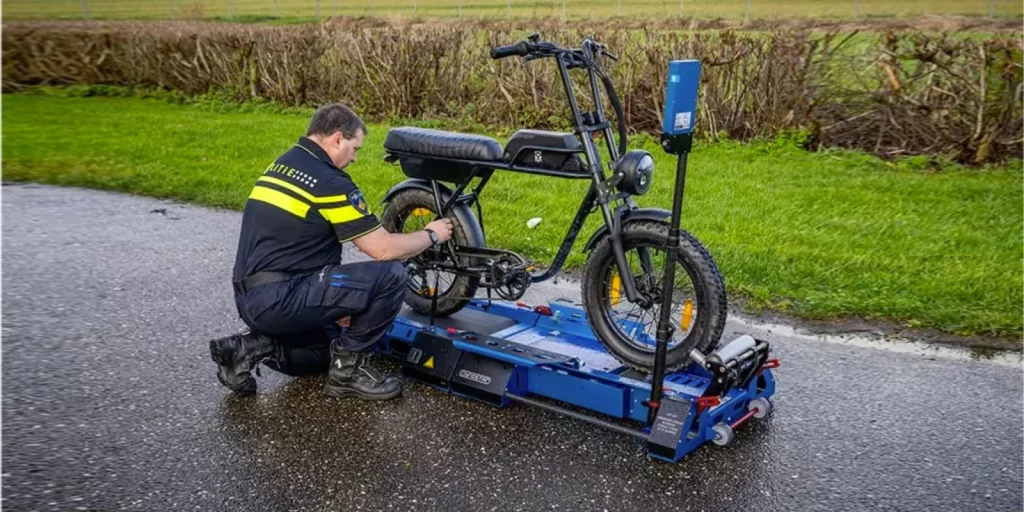⚖️ What Makes an E-Bike Actually Compliant?
There’s a lot of confusion around what defines a “legal” or compliant e-bike in Australia. Here’s a clear, no-nonsense breakdown from experts at VOLITION – Pioneers in EBikes.
🔍 Local Laws Vary Slightly
Each state may have minor differences. For example:
-
NSW : Legal e-bikes must have a 500W (nominal) motor limit with pedal assist.
-
Others : pedal-assisted e-bikes up to 250W.
- there are things to consider such as the bike cannot weigh more than 50KG …etc
Always check your state or territory’s latest regulations. But there is so much more than 250/500w numbers.
📊 Nominal Power ≠ Peak Power
E-bike motors are rated by nominal (continuous) power, like “250W”.
But all motors — even Bosch and DJI 250watts systems — will temporarily output much more (often 700W–1000W peak) during acceleration or hill climbs.
This is normal and does not mean the bike is illegal.
Claiming an e-bike is “non-compliant” just because it peaks above 250W shows a misunderstanding of how electric motors work.
Volition can provide a certificate showing the bike is nominal 500Watts or 250Watts by request
⚡Real Testing Requires Real Equipment
No one or no police can test compliance using a phone app or by looking at the bike.
Proper testing involves a dynamometer (shown in the photo), which can produce a power output curve and show actual continuous output over time – which is a very unlikely event in any state. If this does happen, what you have done in the first place ?!
🚲 Speed Limit = 25 km/h (Assisted)
Electric assistance must cut off at 25 km/h.
You can still pedal faster (e.g., 30+ km/h), especially on flat roads — that’s legal, as the extra speed comes from your own effort and momentum.
🛑 No Full-Throttle Riding
-
In short – if you are concerned , just do not put a throttle on the bike!
-
Legal e-bikes cannot have a throttle that propels the bike beyond 6 km/h (known as walk-assist). All Volition e-bikes feature a compliant walk-assist function built into the display system.
-
Throttle-controlled e-bikes (without pedaling) are only legal up to 200W — and only in certain states like QLD.
⚡ A Power Switch Doesn’t Make It Legal
Switching power modes doesn’t get around the regulations.
Any company selling you this idea is lying to you. If a bike is capable of exceeding legal output — regardless of mode — it can be considered non-compliant under road rules.
⚖️ “What If I Only Limit the Speed or the Power?” — It Doesn’t Work That Way.
We often get asked:
“If I install a throttle but limit the speed to 25 km/h, is that okay?”
Or:
“If I remove the throttle but keep a 1000W motor, is that legal?”
🚫 Unfortunately, no.
To stay within the law, you need to follow the full set of compliance requirements, not just part of it.
⚠️ “Throttle Gives You More Power”? That’s a Common Misunderstanding.
We often hear riders say, “I’ll just use the throttle to get up the hill faster.”
But that’s actually not true.
Whether you’re using pedal assist or throttle, the motor’s maximum power output is the same. A throttle doesn’t magically give you more watts.
In fact, relying only on the throttle (without pedaling) often means slower hill climbs, because:
-
The rider becomes dead weight, contributing no power
-
The motor is doing all the work, leading to faster battery drain and less efficiency
🚴♂️ Want to climb faster and easier? Pedal!
🔧 What About Torque? This Is Where It Gets Interesting.
This is where many people get confused — and where great engineering makes a huge difference.
Unlike motor power (watts), there are no regulations limiting how much torque (Nm) an e-bike can produce. And in real-world riding, torque is far more important than raw wattage — especially when – climbing hills, carrying cargo or fast acceleration
Here’s the surprising truth:
-
✅ A well-engineered 250W e-bike can produce up to 110Nm+ of torque
-
❌ A poorly engineered 500W e-bike might only deliver 65Nm of torque
So don’t be discouraged by the 250W power limit — because torque is where the magic happens.
💪 Volition e-bikes are known for high-torque, premium drive systems — delivering powerful, smooth, and fun rides within full legal compliance.
⚖️ What About Weight?
Yes — there is a legal weight limit for e-bikes in Australia:
🚫 50kg maximum (including battery) to be considered road-legal.
Some high-powered models on the market weigh 46–48kg, pushing dangerously close to that threshold. While technically compliant, the extra weight comes with real-world downsides:
-
🔧 More maintenance — Heavier bikes wear out brakes, drivetrains, and suspension faster.
-
😓 Less fun — They’re harder to balance, steer, lift, and transport.
-
⚡ Lower efficiency — More mass = more strain on the motor = reduced range.
-
🏁 Slower acceleration — When power is capped (e.g. 250W), a lighter e-bike accelerates faster, giving a more responsive ride.
✅ Volition: Power Without the Bulk
-
Volition Koala: Just 30kg+ — one of the lightest utility e-bikes available today.
-
Volition MAX eMTB Series: From only 24kg — ultra-lightweight, full-power electric mountain bikes.
Experience agile handling, longer component life, faster take-off, and full compliance — without compromising performance.
🎯 LASTLY ! Do You Need a Throttle? Not Really.
Volition’s premium mid-drive systems are engineered for performance and responsiveness. Our city and commuter bikes feature 24-position sensors per crank revolution, ensuring ultra-smooth and intuitive pedal assist.
For our eMTBs, we use advanced infinite-stage torque sensors — among the best-in-class — providing seamless power delivery that adapts instantly to your effort.
The result? A natural, powerful riding experience — without the need for a throttle.






